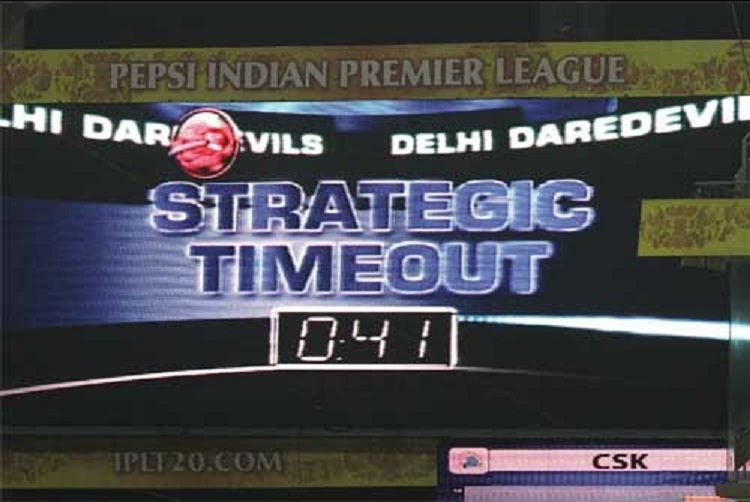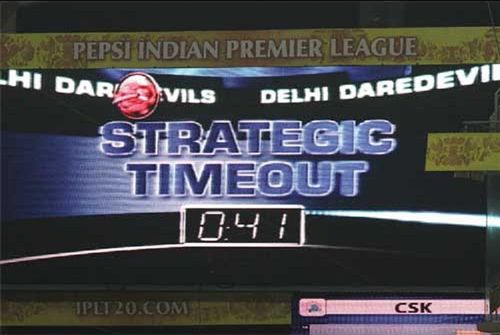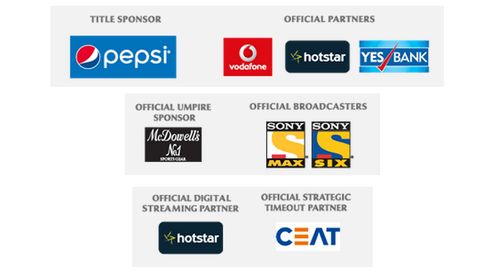
'Strategic time-out' or time-waste?

What makes football the most popular sport in the world? I believe it is the flow of the game. Unfortunately in cricket, the introduction of timeouts and breaks for monetary reasons, more than strategic, have killed the flow that the gentleman’s game had.
In football, we have 45 minutes of action, a 15-minute break and again a 45-minute half, after which the game comes to an end. Cricket, on the other hand, has a decent breather after every 6 legal deliveries. After each over, the batting sides are changed and the change in field takes a significant amount of time.
It’s been a while since fans got used to watching advertisements after every over of the match and now, nobody really bats an eye on the commercial reasons behind those intervals.
Strategic timeouts – the introduction
Cricket isn’t the first sport which has timeouts. Basketball has implemented the concept of timeouts quite successfully, but this is a very fast-paced sport, something which cricket isn’t.
In the 2009 season of IPL, the management introduced another mid-innings ‘break’ called the ‘strategic timeout’. In the middle of each inning, a seven-and-a-half-minute of television timeout was held. It wasn’t well received as viewers argued that the flow of the game was unnecessarily halted.
The next change in rule came when the management scrapped the single break in each inning and introduced 2 two-and-a-half minutes break in each inning. The first would be for the bowling team, who can take it anytime between the sixth and eight overs, while the batting team get their chance between the 11th and 16th overs.
Going by the name (strategic timeout), these intervals are made to plan the game according to the situation, but what change can happen to the course of the game by just two-and-a-half minutes of contemplation? Well, the complexion of a T20 game can change with each and every delivery, then why are these time-outs not employed in international T20 matches?
The obvious reason being it costs one of the most valuable things in the world – time.
T20 cricket is supposed to be a fast game. The teams sit behind the boundary line so that the new batsman can come in faster – in 1 and a half minutes, rather than the 3 minutes of allotted time in ODIs and Test matches. In this dynamic T20 cricketing world, even drinks breaks aren’t allowed in between innings.
The monetary benefit to the organizers

Why are these timeouts there in IPL cricket alone? These ‘advertisement breaks’ are one of the key revenue sources of the major money-spinning tournament of the nation. CEAT Tyres has signed a 3-year strategic timeout sponsorship deal for IPL for an estimate of Rs 12-15 crore per year starting from the 8th season.
Well, there should be an aim and a strategy for every team. But, in a game where an inning lasts 90 minutes at the most, are two breaks really needed? Don’t the coaches have enough time to put in place a plan before the match and in the innings break?
Fans get disappointed as well as a little over two minutes does not even allow them to go to the food court to get something to eat, so they have to just sit in their seats and watch teams drink water and get together in a huddle talking – something which the crowd can’t hear.
In T20, timeouts are taken by a team once the opposition has gathered momentum and they want to put a stop on that. There have been quite a few occasions when the momentum got reversed after the ‘strategic interval’.
In the 2nd qualifier match of IPL 2014, Chennai Super Kings (CSK) were going at a run-rate above 15 when the time-out was called just after the powerplay. Suresh Raina had been in staggering touch, scoring 87 from just 25 balls and it seemed like CSK would chase down the target of 227 with ease. But, the first ball after the timeout changed the face of the game. A slight misunderstanding between Raina and Brendon McCullum led to the run out of the southpaw and eventually CSK lost the plot by 24 runs.
Other alternatives
Strategic timeout is an innovative idea, but it carries both merits and demerits. Timeouts are almost unavoidable now as 600 advertising seconds brings a great deal of money to the Indian Premier League.
A mandatory timeout of 3.5-4 minutes after the 12th over instead of 2 timeouts of 150 seconds each may probably be a healthier option, as it ensures a better flow of the game. At the same time, the revenue stream isn’t impacted massively. It will also give the coaches and captains of both teams a perspective as sometimes 6 overs is a little too less to gauge how a team is doing. 4 minutes also gives them more time to explain their plan to the team and strategize accordingly.
Another option is to make timeouts optional. Team captains must be given the authority to call timeouts between the allowed overs, only if it seems necessary. That can be a bit encouraging for the ever-crucified bowlers as when they have the momentum, nothing will break the flow of the game at least till the end of 11th over.
But the concerned authorities must make sure that these timeouts shall never become too business-oriented as it may slay the competitiveness and entertainment which makes the IPL what it is.